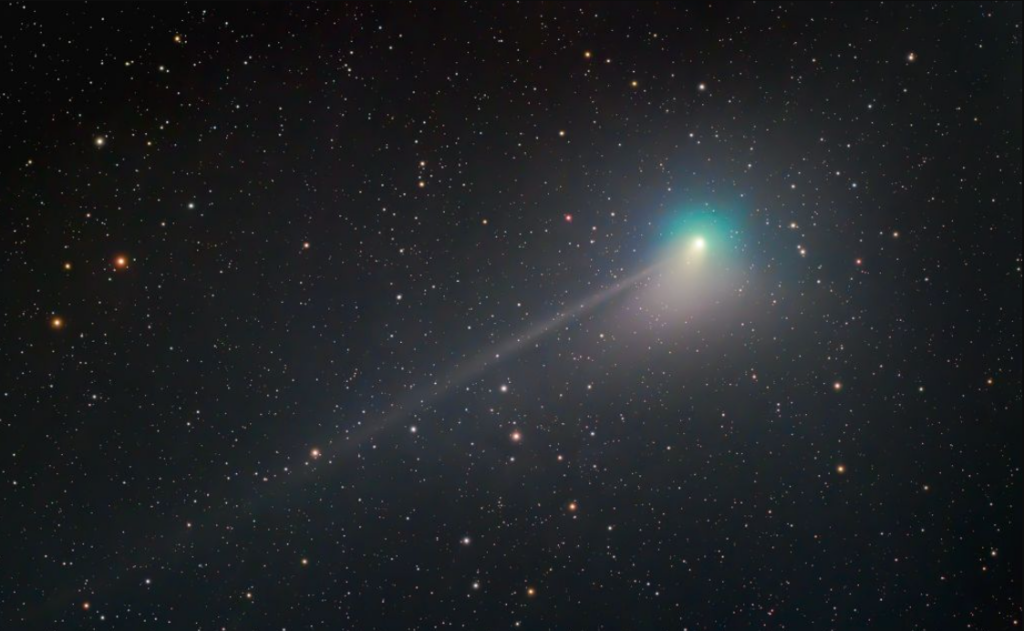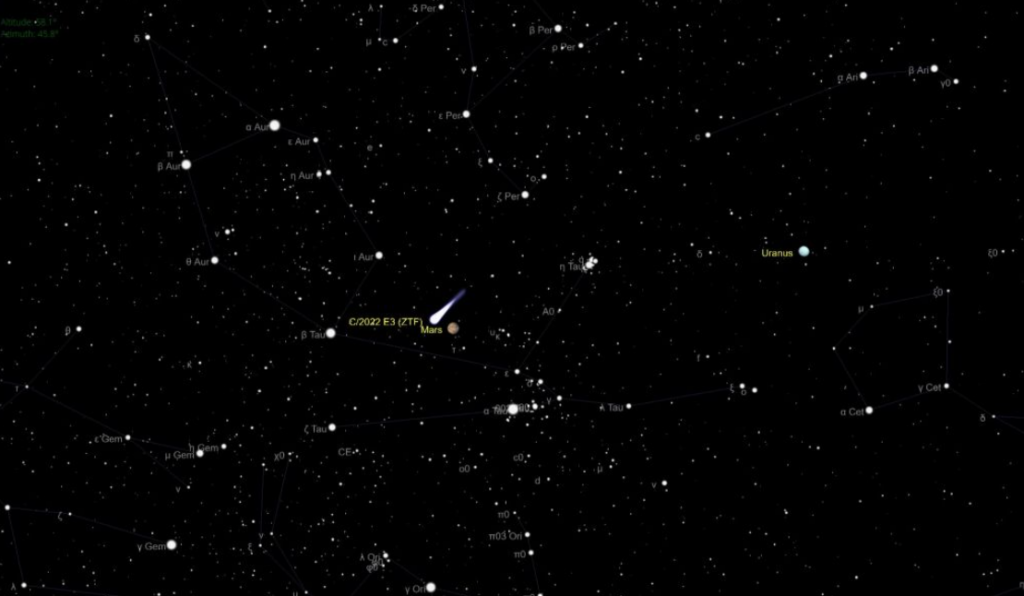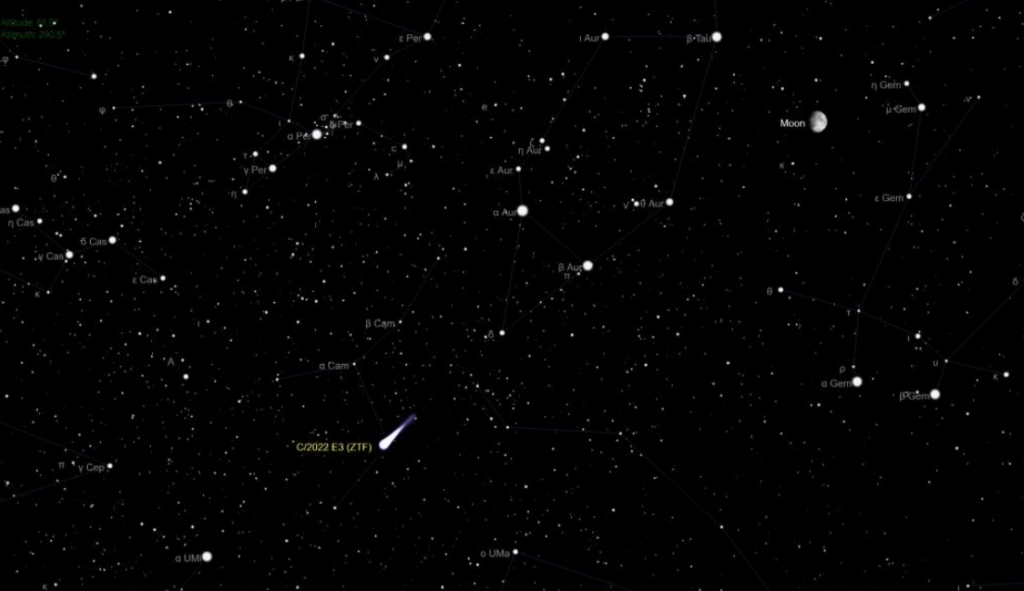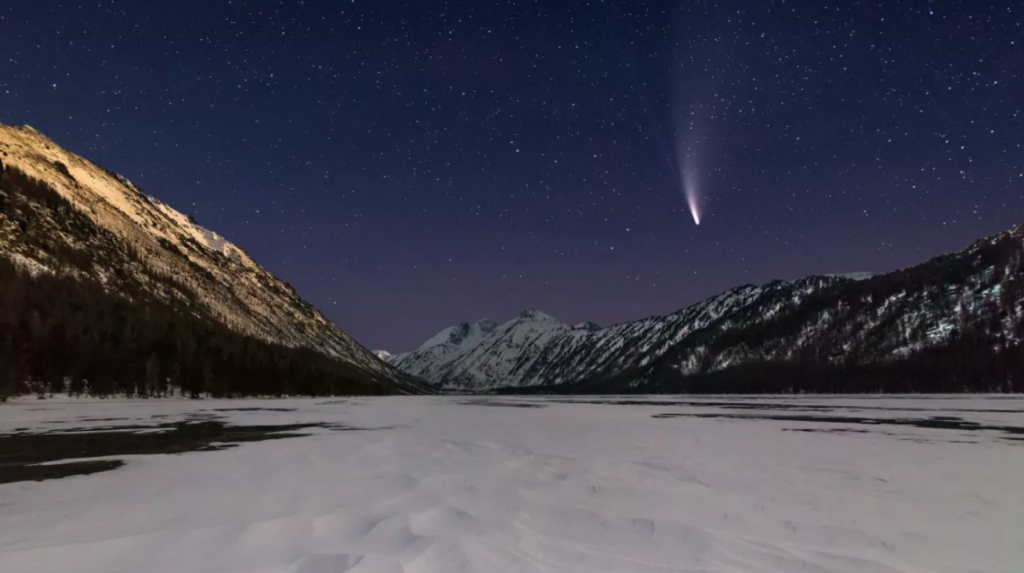Hold onto your hats, stargazers, because on Wednesday (Feb. 1) a comet that hasn’t graced our skies since the last Ice Age and the days of the Neanderthals will be making its closest approach to Earth. That’s right, the comet C/2022 E3 (ZTF) is set to put on a show and you won’t want to miss it!

As it travels through the inner solar system, this celestial traveler will be at its brightest, potentially even visible to the naked eye under the right conditions. The comet will be in full view for days as it makes its way closer to Earth and then retreats into the outer reaches of our solar system.
During its perigee, the comet will come to within an awe-inspiring 26 million miles (42 million kilometers) of Earth, which is equivalent to 28% of the distance between Earth and the sun. If you’ve been waiting for a chance to see C/2022 E3 (ZTF), now is your moment! From New York City, this comet is circumpolar, meaning it will be visible for most of the night. It will reside in the Camelopardalis constellation during its perigee, a large but faint area of sky close to the north celestial pole.
Starting at 6:49 p.m. EST (2349 GMT) on Wednesday (Feb. 1), the comet will come into view, 49 degrees over the northern horizon. By 9:46 p.m. EST (0246 GMT), C/2022 E3 (ZTF) will reach its highest point in the sky, 58 degrees over the northern horizon. It will disappear in the dawn light on Feb. 2 at around 5:57 a.m. EST (1057 GMT) while at 30 degrees over the horizon to the north. Observers in the southern hemisphere will have their chance to see the comet later this month, and it will remain visible into early February. While it may be visible to the naked eye, stargazers are advised to bring along binoculars or a telescope for the best view. The comet will shine near the bright star Capella in the Auriga constellation on Sunday (Feb. 5) and near Mars in the Taurus constellation between Feb. 9 and Feb. 13, providing ideal opportunities for observation.

If you’re ready to catch a glimpse of C/2022 E3 (ZTF), be sure to check out our guides on the best telescopes and binoculars. If you’re hoping to capture this celestial spectacle in a photo, our guides on how to photograph the moon and the best cameras and lenses for astrophotography will be of great assistance.
Fun fact: C/2022 E3 (ZTF) made its closest approach to the sun on Jan. 12, passing to within 100 million miles (160 million kilometers) of our star. Its orbital period is a mind-boggling 50,000 years, which means that the last time it came this close to the sun or Earth was during the last Ice Age, with Neanderthals roaming the planet alongside our early human ancestors, the first homo sapiens.
C/2022 E3 (ZTF) was first spotted by the Zwicky Transient Facility’s wide-field survey camera in March 2022, orbiting within the realm of Jupiter. At first, astronomers thought it was an asteroid, but as the comet approached the sun and brightened, they soon realized it was a true celestial traveler. As it got closer to the sun, radiation from our star heated the surface of the comet, causing solid ice to transform into gas through a process called sublimation. This

C/2022 E3 (ZTF) is considered a long-period comet, which means that it takes thousands of years to orbit the sun. This is why this is a once-in-a-lifetime opportunity to witness this celestial event. The next time C/2022 E3 (ZTF) comes close to Earth will be tens of thousands of years from now. So don’t miss this chance to witness a piece of cosmic history!
Apart from its historical significance, the comet’s approach also has scientific importance. Scientists will be able to study the comet’s composition, structure, and behavior as it approaches and leaves the Earth, which will give us a better understanding of comets in general. Comets are considered some of the oldest and most primitive objects in the solar system, and hold valuable clues to the formation and evolution of our planetary system.
The best way to observe C/2022 E3 (ZTF) is to find a clear, dark sky away from city lights. The comet will be visible in the northern hemisphere, so those in the northern latitudes will have the best viewing opportunities. The comet will be visible low in the northern horizon during evening twilight, and will rise higher in the sky as the night goes on. You can use a telescope or binoculars to get a closer look at the comet, but it may be visible to the naked eye under ideal conditions.

The approach of C/2022 E3 (ZTF) is a rare and exciting event, not just for skygazers but for astronomers and scientists as well. It’s a chance to witness a piece of cosmic history and learn more about comets, the oldest objects in our solar system. So make sure to mark your calendar, find a clear sky, and catch a glimpse of the once-in-50,000-year visit of C/2022 E3 (ZTF) to our planet!
